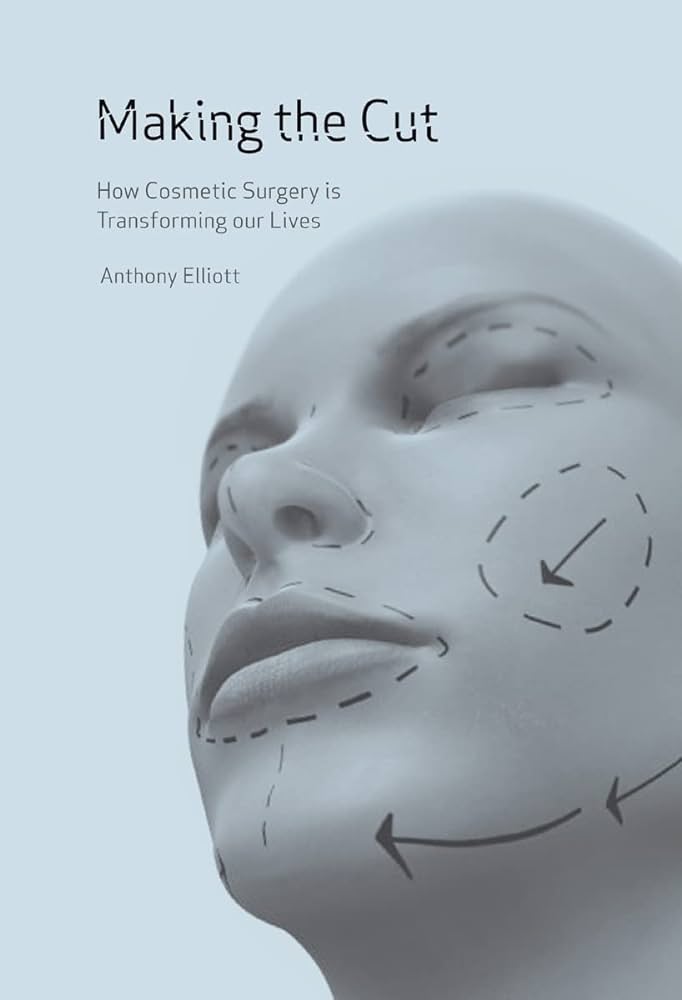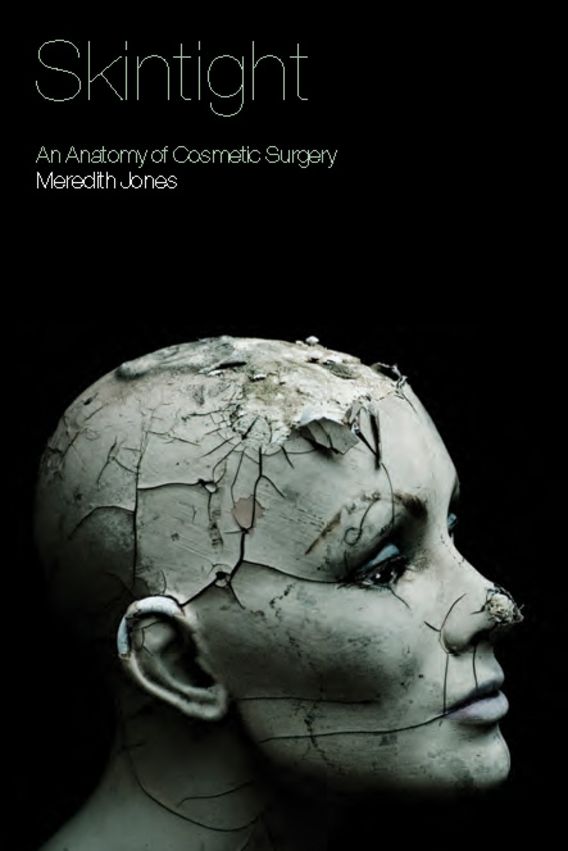
- Free Article: No
- Contents Category: Science and Technology
- Review Article: Yes
- Article Title: Drastic plastic
- Online Only: No
- Custom Highlight Text:
In Making the Cut: How Cosmetic Surgery is Transforming our Lives, Anthony Elliott casts an unforgiving eye over the astonishing growth of ‘cosmetic surgical culture’. No longer the province of the rich and famous, Botox and skin peels, laser surgery and liposuction, face-lifts and breast augmentations have become part of the fabric of everyday life. Elliott’s analysis lays bare the culture of nip and tuck, and the era in which ‘many are calculating that a freshly purchased face-lift or suctioning of fat through liposuction is the best route to improved lives, careers and relationships’. Yet what compels people to act upon the desire for self-improvement in such drastic and sometimes life-threatening ways? Elliott identifies celebrity, consumerism and globalisation as fundamental to the increasing popularity of surgical solutions to social and personal dilemmas.
- Book 1 Title: Making the Cut
- Book 1 Subtitle: How cosmetic surgery is transforming our lives
- Book 1 Biblio: Reaktion Books (Footprint Books), $45.95 pb, 255 pp
- Book 1 Cover Small (400 x 600):

- Book 1 Cover (800 x 1200):

- Book 2 Title: Skintight
- Book 2 Subtitle: An anatomy of cosmetic surgery
- Book 2 Biblio: Berg Publishers (Footprint Books), $65 pb, 222 pp
- Book 2 Cover Small (400 x 600):

- Book 2 Cover (800 x 1200):

The cult of celebrity looms large in contemporary life. Images of artificially enhanced beauty and media scrutiny of celebrity bodies abound. In Elliott’s account, not only has celebrity become increasingly synonymous with self-reinvention but it has managed to ‘dismantle dramatically the traditional notion that one looks older as one biologically ages’. Our investment in celebrity culture is ‘experienced as a realm of unconstrained possibility’, one that contains our own fears about the frailty of the human body. However, such powerful emotional investment has a dark side. If the figure of the youthful star represents a kind of ‘symbolic cheating of death’, then the exposure of celebrity frailty and the ageing human body brings with it the ‘return of the repressed’.
As with celebrity, consumerism promises power, freedom and the capacity for unconstrained self-making. Although, as Elliott acknowledges, an increasing number of men are turning to cosmetic surgery, it remains predominantly women who are seduced by the anti-ageing paradigm and caught up in the commodification of ‘enhanced body parts’. But in the end, ‘cosmetic surgical culture provokes the very anxiety it seeks to quell’. As with the empty frustration that accompanies other forms of consumption, the consumer identity effected by cosmetic surgery is ultimately plagued by dissatisfaction and restlessness.
Elliott is cogent and convincing in arguing for the link between cosmetic surgery, celebrity and consumer culture, but the most fascinating and novel tenet of his thesis concerns globalisation and transformations in the new economy:
the fast paced, techy culture of globalization is unleashing a new paradigm of self-making in which individuals are required to pick themselves up by their bootstraps and get on with the tasks, and daily, of reinventing, restructuring, remoulding and resculpting the self.
These cultural imperatives take on a pressing economic and personal form in the world of work. The new economy with its emphasis on impermanence, flexibility and adaptability has generated new anxieties and pressures. ‘Cosmetic surgical culture,’ Elliott suggests, ‘is an attempt to sell youth to an ageist culture.’ In his depiction of the fear of disposability and redundancy, and the existential pain of the loss of youth and the reality of impending death, Elliott deploys his armoury of cultural critique to particularly devastating effect. And it is as an accessible cultural critique, as much as it is a commentary on the booming industry of ‘drastic plastic’, that marks Making the Cut as an important book.
In Skintight: An Anatomy of Cosmetic Surgery, Meredith Jones draws on a similar array of material, from magazines, television and websites, to interviews with cosmetic surgery recipients and surgeons, in a less pessimistic analysis of the contemporary phenomenon of ‘makeover culture’. Employing feminist and cultural studies approaches, but not shirking from forays into other theoretical traditions, she explores the imperative of self-improvement that is central to make-over culture and its quintessential expression in cosmetic surgery.
Jones’s detailed study begins with a pithy historical sketch of reconstructive and plastic surgery. The origins of modern cosmetic procedures are situated in the corrective techniques developed during World War I to treat horrendous injuries resulting from trench warfare. The shift in focus from the repair of male disfigurement to the predominantly female beautification industry, in all its vanity, excess and amorality, is powerful in its starkness.
Given the strongly gendered nature of cosmetic surgery – women patients and male doctors – it is not surprising that critical engagement with this subject has emerged from within academic feminism. Jones sets up an argument for ‘new ways of seeing and theorising cosmetic surgery from feminist viewpoints’. It is not only through examination of ‘extreme makeover practitioners’ that this idea is developed: postmodern metaphorical analyses of architectural spaces are brought into play as well. The Bonaventure Hotel in downtown Los Angeles with its smooth, shiny surface ‘parallels the results of facelifts, laser dermabrasion and chemical peels’, while Melbourne’s porous, unpolished, meandering Federation Square – ‘a building with cellulite’ – offers an alternative ‘template for cosmetic surgery that is not bound by the tyrannies of “femininity” and youth’.
For Jones, like Elliott, celebrity culture and consumerism have become central to the elevation of artificially enhanced beauty. The story really begins in the mid 1990s when cosmetic surgery began to be repositioned as something that ‘normal’ people did. Increasing media saturation is noteworthy in this regard. Jones shows how reality television helped shift cosmetic surgical practice from the realm of vanity to a form of self-improvement requiring courage. The recent shift in representations from a magical before/after model to one in which the focus is on the ‘between’ stage of anaesthetised bodies being cut, sucked, stretched and stitched, and bruised recovering patients in physical pain, has ironically given a fillip to surgical solutions for otherwise intractable physical imperfections.
In its valorisation of ‘working on the self’, make-over culture encourages repeated self-renovation in a constant struggle against the decline that accompanies ageing. A sagging body or a face etched with the ravages of time exposes as fantasy the notion that you are only as old as you feel. The struggle finds legitimation in the concept of ‘stretched middle age’. While conceding that a desire for youthfulness is at the heart of cosmetic surgery, Jones suggests that people (mostly women) use cosmetic surgery not to defy ageing but to design it. It is about ‘looking good for one’s age’.
Jones identifies the rhetoric of ‘better not younger’ as operating both in advertising and promotional material, a motive also advanced by her interviewees. The imperative is to grow old gracefully. But it is a delicate balancing act. Celebrities deemed to have gone too far or to have had excessive cosmetic surgery are ridiculed. Farrah Fawcett is thus the epitome of ‘growing old disgracefully’. As one magazine declared, her obsession with cosmetic surgery ‘tipped her over the edge from the well preserved to plain weird’.
For those interested in the ‘plain weird’, there is plenty on offer in Skintight: from the bizarre transformations of Michael Jackson, to the anaesthesia-loving Lolo Ferrari, the French pornographic star with breasts the size of basketballs, to the performance artist Orlan, whose work includes public staging of cosmetic surgeries and exhibitions of her liposuctioned fat. But it is Jones’s analysis of the everyday that is most compelling. Her interview material clinches her case that many women who seek surgery do so not in the hope of becoming more beautiful but rather with the desire to be ‘normal’. This concurs with Elliott’s observation that cosmetic surgery is as much about the desire to go unnoticed as it is about standing out from the crowd.
Yet in the final analysis, what does it mean at a societal and personal level that we have now embraced endless self-improvement? While Jones finds reasons for optimism, at least at a theoretical level, in analyses of radical surgery and postmodern architectural spaces, Elliott’s Making the Cut is a more sobering account. If the rise of cosmetic surgical culture is an expression of our unfettered and pathological desire for youthful and increasingly artificial beauty, then the social, personal and psychological costs of this profound cultural shift are cause for considerable concern.


Comments powered by CComment